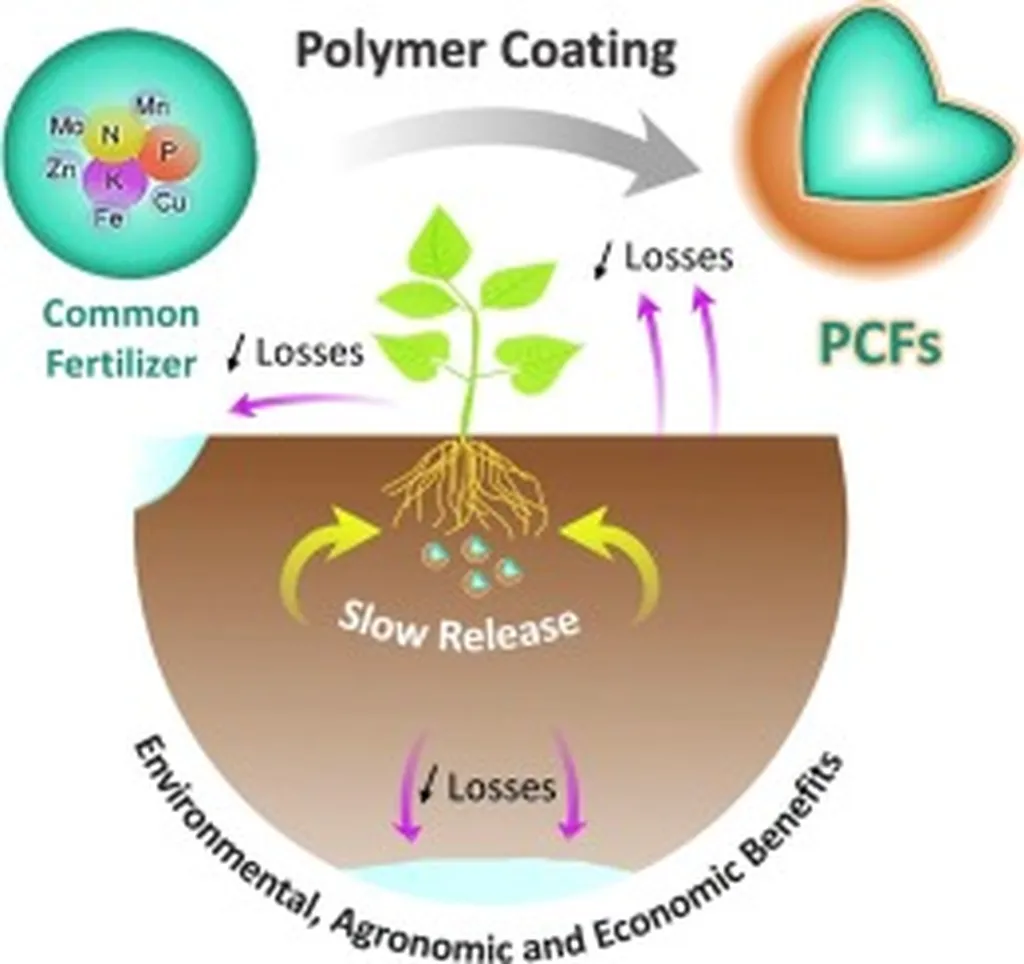In the ever-evolving landscape of agricultural technology, a groundbreaking study led by Mhamed Berrada from the Institute of Science, Technology & Innovation (IST&I) at Mohammed VI Polytechnic University (UM6P) in Ben Guerir, Morocco, is paving the way for innovative solutions in controlled release fertilizers. Published in the esteemed journal *Macromolecular Materials and Engineering* (translated to English as “Macromolecular Materials and Engineering”), this research delves into the fascinating world of amphiphilic photoresponsive polymers, offering a glimpse into a future where precision agriculture meets cutting-edge materials science.
Photoresponsive polymers are a dynamic class of materials that react to light, while amphiphilic polymers possess both hydrophobic and hydrophilic properties, allowing them to interact with a wide range of environments. The marriage of these two properties has given rise to amphiphilic photoresponsive polymers, which can self-assemble into various nanoscale structures, such as micelles and vesicles. These structures can be precisely controlled through exposure to light, opening up a plethora of possibilities for controlled agrochemical release.
“By harnessing the power of light, we can trigger changes in the polymers’ properties, influencing the formation and stability of these nanoscale structures,” Berrada explains. “This precise control allows us to design materials that can release fertilizers in a controlled manner, enhancing efficiency and reducing waste.”
The potential commercial impacts of this research are substantial. In the energy sector, controlled release technologies can lead to more efficient use of resources, reducing environmental impact and improving crop yields. This can translate into significant cost savings for farmers and a more sustainable approach to agriculture.
The study also provides a comprehensive overview of the synthesis pathways of photoresponsive polymers, with or without amphiphilic behavior, and discusses the potential opportunities these polymers present for improving controlled agrochemicals release. “This research is not just about developing new materials; it’s about creating a more sustainable future for agriculture,” Berrada adds.
As we look to the future, the implications of this research are vast. The ability to control the release of agrochemicals with such precision could revolutionize the way we approach agriculture, making it more efficient, sustainable, and environmentally friendly. The work published in *Macromolecular Materials and Engineering* is a testament to the power of interdisciplinary research and the potential it holds for shaping the future of agriculture and beyond.
In the words of Berrada, “We are on the cusp of a new era in agriculture, one where technology and sustainability go hand in hand. This research is just the beginning of what we can achieve.”

